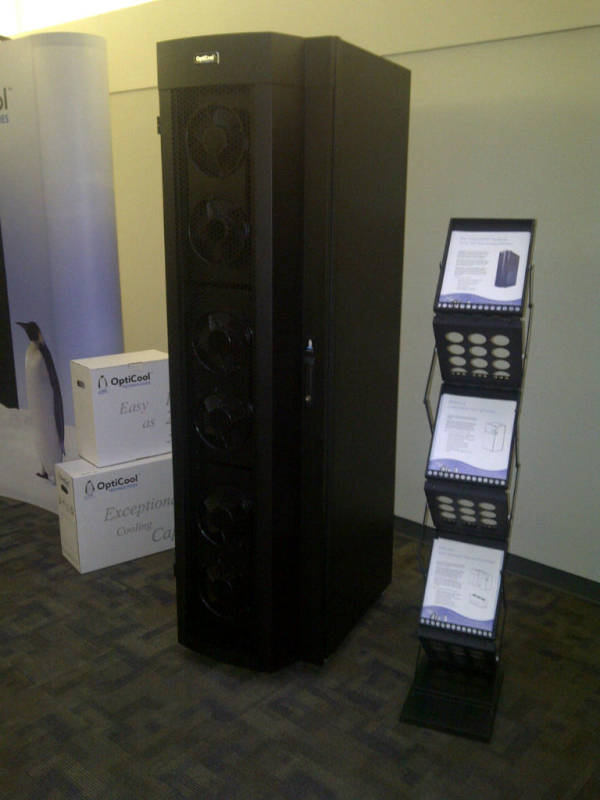|
You depend on your AS/400 systems for critical parts of your business operation. However, you need to make a major change to keep up with the latest operational requirements. Collaborative and connected infrastructures empower companies to adapt quickly to changing markets, streamline their operations and produce a seamless customer experience. In most cases, you need to take your existing systems through a digital transformation to achieve these goals. Before you dive into a technology-forward new world, you need to ask yourself whether or not your organization is ready for a digital transformation.
Start With a Disruptive Vision
Many companies jump into digital transformation by looking at the solutions they can procure or putting together a list of improvements to their existing business processes. You might accomplish incremental improvement with this approach, but you don't undergo a complete transformation. Take a step back. Think about a truly disruptive vision that uses technology as the backbone. Brainstorm how a fully integrated and collaborative infrastructure could open up entirely new business models, job roles, revenue streams and business processes. Keep the technology at the forefront of your vision.
Develop the Necessary Skills Internally and Through Expert Partners
Another digital transformation strategy pitfall comes from the increased reliance on innovative technology, as many companies lack the resources to support these high skill positions effectively. Trying to recruit during the transformation process is also difficult, as the supply of specialists often falls far below the demand. You end up trying to have existing staff do the work of multiple positions or spending significant money bringing in contractors and consultants to support your efforts. You can avoid many of these problems through a robust internal skills development program that's in place long before you begin the digital transformation process. Work with the HR department and team managers to surface staff members interested in expanding their skill sets and learning the technology that forms the core of your future operations. This move also positions you as an excellent company to work for, as many employees look for organizations that invest in their training and education. Upward mobility is an attractive prospect for many talented individuals. You don't want to use consultants and contractors for the parts of the operation that require full-time attention, as this isn't cost efficient, but you do want to form relationships with a solid stable of trusted partners. One-off needs or high-volume periods are easier to handle when you can bring in experts that guide your team and provide a valuable perspective on the transformation.
Base Your Planning Around Quantifiable Results
Gut feelings and intuition can derail your digital transformation before it really gets off the ground. You need hard data to refer to when you need to discover problem areas in this process, gauge employee buy-in and reception, and finding out whether it's truly giving your customers what they want. Make a list of the most important key performance indicators that show your success rate. Each metric should be a meaningful part of the information, rather than looking at data for the sake of it being available. By focusing on a short list of metrics, you can keep your attention on the things that matter during your digital transformation.
Add Tech-Forward and Collaborative Ideals to Your Company Culture
Digital transformation requires a future-thinking company culture that is tech forward and collaborative in nature. Without investing in a culture change, you run into significant resistance, high employee turnover, and other problems. Work these ideas into the way that you're doing business currently, so your organization is prepared by the time the digital transformation is fully underway. Being eager to get started on digital transformation is understandable. You get much more out of your AS/400 systems when you can connect them with other parts of your business for an innovative and ground-breaking approach. However, you have to take the right approach to get a true digital transformation that puts your business on the right track for future competitiveness. |
Able-One Blog
Grant Sojnocki
Recent Posts
Topics: Digital Transformation
By Grant Sojnocki, President, Able-One Systems
 In recent years “going green” and “green business” have been commonly heard buzz words.
In recent years “going green” and “green business” have been commonly heard buzz words.
At Able-One Systems we made it such a priority that one of our six solution areas is termed “Green Data Centre”. Although it is something that most people realize the importance of, many of our clients are asking “at what point does it make business sense?”
Generally speaking, people want to do what they can to positively impact the environment, but still need to prioritize the needs of their business. That being said, with the many advances in green technology, we are beginning to see many truly strong business cases for “green” investment both in the data centre and in many other areas.
Although the business cases can be strong on their own, when you consider the additional financial incentives that are currently available such as those offered by the Independent Electricity System Operator (IESO) in Ontario, it is apparent that there is no better time than now to consider your green options.
Why go green?
- ROI and payback periods have become more compelling than ever
- Improved public image; customers are beginning to favour green companies
- Current government incentive programs such as those offered by the IESO that make it easy and affordable to assess and implement
Energy Programs
The programs are:- Audit
- Retrofit
- Process & Systems
- Metering
The program that is most utilized among our clients is the process and systems assessment. The reason being is that it includes a 100% government funded study (up to $50,000) to assess your current systems and processes; in addition to up to 70% of capital costs for energy efficiency upgrades. Upon completion of the assessment you receive a stamped and approved engineering study detailing the benefits of implementing various policies or upgrading certain equipment.
Currently, there is no obligation for you to implement anything in the document but will allow you to effectively evaluate your options and potential for savings. Able-One Systems, through a partnership with a speciality engineering firm, offers a free site walkthrough in order to predetermine whether our clients would qualify for a fully funded assessment.
If you would like more information on these programs you can visit our page on energy assessments and download the PowerPoint. Also please feel free to reach out to me directly at Grant.Sojnocki@ableone.com.
Topics: Infrastructure
By Grant Sojnocki President, Able-One Systems
In our first blog post we talked about the growing problem of heat management in the data center, and discussed why traditional methods for cooling are no longer economic or environmentally friendly options.
Carrying on with this topic, in this post, we’re going to focus on a disruptive, new technology that removes the heat at the point of need --the back of the rack -- in a very energy efficient manner.
Able-One Systems is now an authorized reseller for OptiCool™ Technologies, an emerging leader in cooling solutions. OptiCool™ was recently identified by Gartner in two research publications in July -- the "Hype Cycle for Power & Cooling Technologies, 2012," by John R. Phelps, and the "Hype Cycle for Server Technologies, 2012," by John R. Phelps and Mike Chuba. Gartner positions the rack-cooling and liquid cooling technologies markets, which OptiCool™ is a leader, as "early mainstream" and assigns a technology benefit rating of "high."
-resized-600.jpg?width=192&height=256&name=opticool_demo_unit_(1)-resized-600.jpg)
The OptiCool™ cooling solution has many benefits over room-based and row-based cooling:
- Exceptional energy efficiency - up to 95% less in room cooling energy required
- Exceptional space efficiency - up to 90% less cooling footprint required
- Exceptional for high density – Increased in-rack cooling capacity by 500%
- Flexible cooling redundancy options including in rack redundancy
OptiCool delivers a highly practical cooling solution for existing facilities and new construction. The bottom-line is OptiCool™ will use less energy, less space, increase cooling capacity and reduce noise levels, offering s a very attractive new cooling option with a very strong return on investment.
See OptiCool™ in Action!
Meet up with our team, and learn more about the OptiCool™ cooling solution at the Toronto DatacenterDynamics Converged Event, happening November 27th at the Allstream Centre. You can find us at booth #11.
Topics: Infrastructure
Embrace Next Generation Cooling Methods with Able-One Systems and OptiCool™
By Grant Sojnocki President, Able-One Systems
Our IT industry has experienced significant technical advancements, specifically within the data center, over the last number of years. Storage, memory, networking and server technology is better than it has ever been, and these advancements allowing our customers here at Able-One Systems to deliver faster, better service to their end users than ever before. The increasing density of this technology within the data center has a very real environmental downside. It’s a problem we’re passionate about solving at Able-One Systems, and we believe we’re uniquely positioned to make a difference.

Is it hot in here?
The problem is a fairly simple one to wrap your head around. When you up the power, you up the heat. When you up the heat in a data center housing millions in sensitive equipment, you need to effectively remove that heat in order to protect the equipment and prevent catastrophic failure.
This is not a new problem, just a growing one. The heat load generated by computing electronics within equipment racks has doubled over the last eight years. Yet businesses continue to use traditional and fundamentally flawed methods to cool entire rooms flooded with heat from hot electronics. The heat is climbing and we’re throwing air conditioners or air movement contrivances at the problem. It is simply not a sustainable, or smart planet, approach.
This extra cooling contributes significantly to overall energy cost, the fastest growing expense for a data center manager. In a 2011 article in the New York Times, it was reported that Google, a gorilla in the data center world, continuously uses enough electricity to power more than 200,000 homes, and its estimated carbon emissions for 2010 were just shy of 1.5 million tons – nearly all attributed to the carbon fuels required to provide electricity necessary for power and cooling. Estimates show s in North America now account for 2-3% of all electricity consumed.
So what is the answer to this dilemma? In our next blog post we’ll explore some innovative new methods for data centre cooling.
Come Meet Able-One Systems at DatacenterDynamics Converged!
Meet up with our team, and gain new insights on cooling at Toronto DatacenterDynamics Converged Event, happening November 27th at the Allstream Centre. You can find us at booth #11.
Topics: Infrastructure









